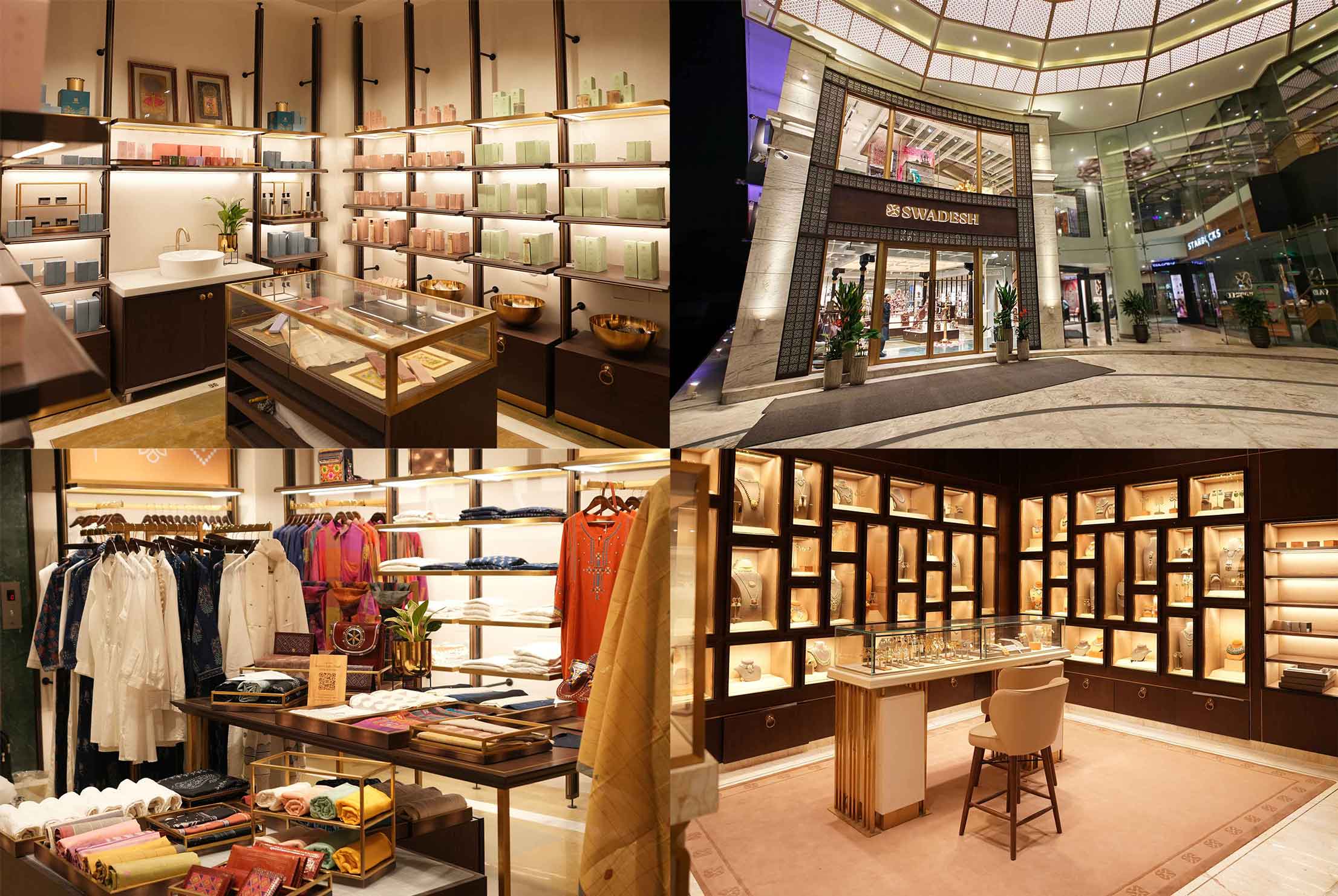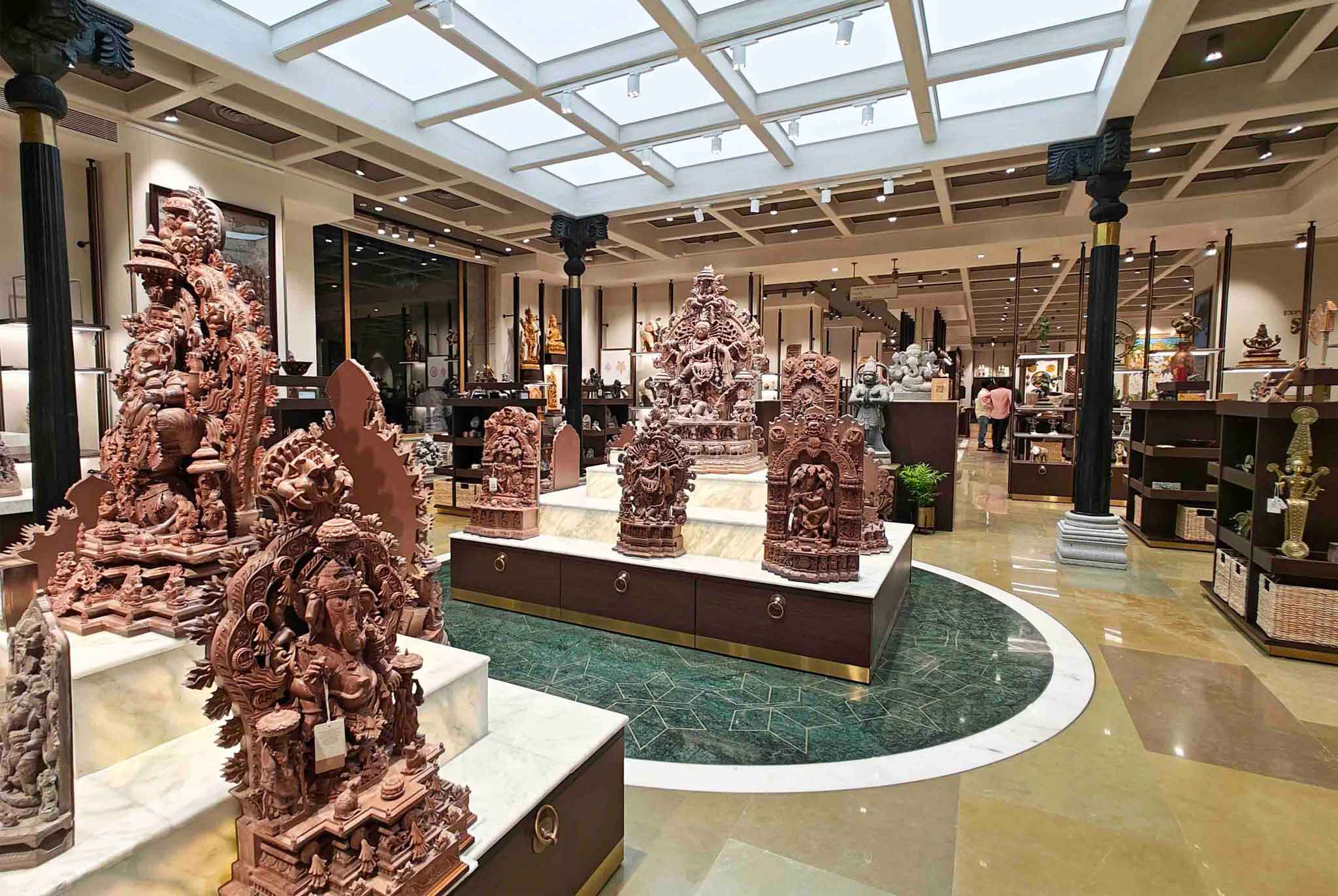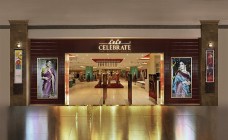The making of Swadesh: The designers’ journey
By N Jayalakshmi | December 20, 2023
What happens when a store design project becomes more than just another project, but a meaningful experience to absorb and cherish? Well, that’s what happened when the design teams at JGA and FRDC took on Swadesh store project, that was recently inaugurated at Hyderabad and created quite a buzz. Ken Nisch, Chairman - JGA, and Sanjay Agarwal, Co-Founder & MD - FRDC, share the experience with Retail4Growth.
Reliance Retail recently launched the first flagship of ‘Swadesh’ at Jubilee Hills, Hyderabad, positioned as a showcase of Indian art and handicrafts. The store, which has already created quite a buzz, was designed by FRDC and JGA, with the design team diving deep into the brand vision and ethos to craft a unique experience.

Ken Nisch, Chairman - JGA, and Sanjay Agarwal, Co-Founder & MD, FRDC, share with Retail4Growth.com the thought process behind Swadesh and what went into the making of it
Strategy and vision for the store and how it was translated into design
Ken: When we were approached by Reliance Retail regarding their Swadesh store project, we recommended that we partner locally, as we always do. In India we have always worked with FRDC right from the beginning; Sanjay and his team given their strong international perspective and work in parallel with the JGA team right through a project. Likewise, the JGA team works closely with FRDC as true collaborators.
For Swadesh, the briefing from Reliance Retail team included their whole vision for the brand. The concept and strategy essentially focused on creating a world class store that also remained true to its Indian roots. Thus, Indian craftsmanship, skills of local artisans and richness of Indian materials were an integral part of the thought process from the beginning.
The key design objectives included:
- Creating a sense of discovery
- Fusing together the familiar and the unique
- Capturing the interest of the local shopper, while making the shopper journey exciting for future international customers

Sanjay: At Swadesh, the idea was not only to help people explore and visualize, but also experience craft in its entirety. Hence, it couldn’t be a regular, transactional store space, but a space where people could experience the handcrafted merchandise in an evocative manner, where they could visualise the whole ambience and make it a part of their daily lifestyle.
Cultural/social context that inspired the design strategy
Ken: Essentially the space had to highlight the whole experience around shopping, marketplace, the craftsperson and the customer. This meant a lot of interaction and engagement spaces within the store for demonstration of crafts, a master gallery for celebrating the best and finest and spaces for social interactions, like a café.
Sanjay: We wanted every corner of the store to be inspired from India’s rich materials and craftsmanship. Swadesh thus has more than 50,000 crafts made from more than 5,000 indigenous materials. The idea was that when people move through various zones, they get the feel of wandering through a curated marketplace, rather than a departmental store.

Choice of store elements - materials, lighting, fixtures, colour themes and others
Ken: The overall space has a very restrained palette - warm metals, honed and polished stone, handmade tiles, a variety of woods stained, painted or oiled. Essentially there is harmony between products and architecture and the degree of used materials varies in order to create a series of zones that are more dramatic - airy and bright, clean and contemporary, thus contrasting with the degree of texture and complexity in the product itself. The master gallery is the most minimalist from a material standpoint.
Lighting is integrated wherever possible into the actual fixture system to provide strong highlighting, shadowing, and enhanced dimensionality of products, with the primary ceiling lighting also being focal.
Sanjay: The entire design synthesis was based on local Indian materials, colors and accents, also reflecting how they have been applied over the last few decades in various public spaces such as restaurants, hotels, historic monuments and old houses. We wanted to capture that ethos and add a sense of nostalgia within the store. Overall the palette is contemporary, but rooted in authentic Indian materials & applied in a very authentic way.
Integration of front-end technology to enhance shopper journey
Sanjay: Swadesh store uses technology in a very controlled and balanced way, as we didn’t want technology to overpower and take away the essence of the products and the ambience. The store has a good mix of large screens amplifying the products and its attributes, besides certain enabler technologies like NFCs and QR codes for people to explore the products in detail. Also, there are certain hidden technologies which help in faster checkouts and onlinepurchases and some at the design centre that enable global conversations for new project designs. The use of technology also extends to retail security with invisible human trackers in Master Pavilion, designed and deployed for the first time, which prevent people from touching the displayed items. The entire store is also digitally enabled to program HVAC, lighting, audio, music, etc.
Challenges/interesting anecdotes from the project
Ken: One unforgettable part of the project was the onset of COVID. While we, the FRDC team and the Swadesh team were passionate about the project even prior to COVID, the realities of COVID made it even more meaningful. It enhanced everyone’s perspective that Swadesh was more than a project, it was important work. A sense of “family” was created as we worked together to overcome all the challenges - dealing with the realities of supply chain, seeing things first hand, etc. A project like this certainly has its own challenges in normal times, but the “slowing down” of life during this time brought an added degree of opportunity to focus on even the smallest details, which might have been overlooked or rushed through in normal times.
Sanjay: In Swadesh, the products are very sensitive, handcrafted lovingly by the artists who have toiled for days or months. We thus needed to do ensure that the store experience did justice to this, while also creating effective brand impact. Challenges always come in the form of materials, execution, sourcing, application, quality of execution and finesse in details. But right from the beginning, we knew this project and its store design required a great deal of attention to detail, so that it was as authentic as the magnificent crafts it held inside.

Summing up: Some learnings & feedback
Sanjay: After having worked on Swadesh, we have realized that it's actually a series of small things done right that creates an impact. This has been the biggest learning from this project. We have drilled down to small details - from getting the right plant or planter, to the most suitable wood that blends beautifully with Indian stone work, among other things.
The store experience of Swadesh was also widely appreciated by Nita Ambani, Chairperson of Reliance Foundation. Overall, there has been great customer response and feedback on the store, from craft connoisseurs to influencers.








